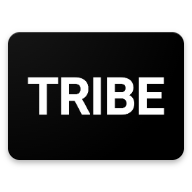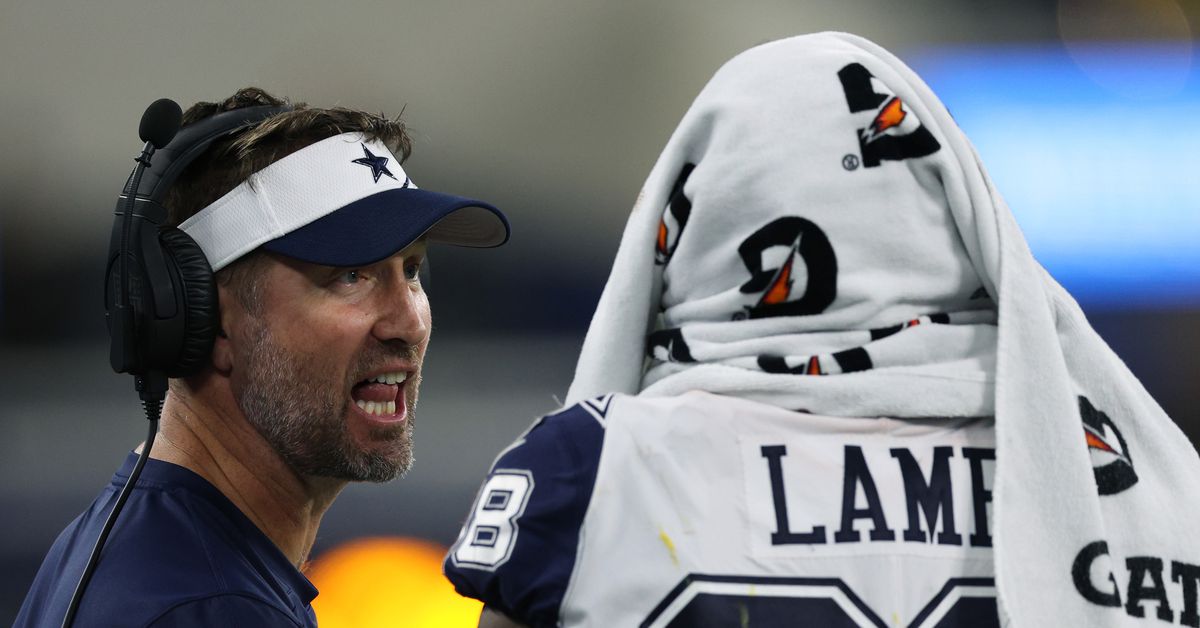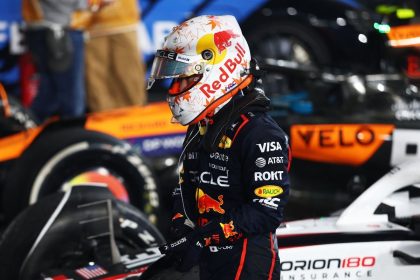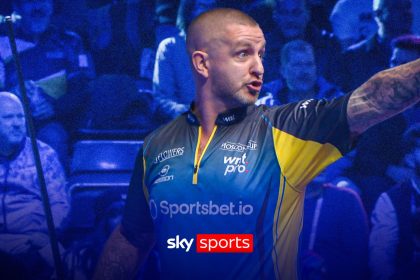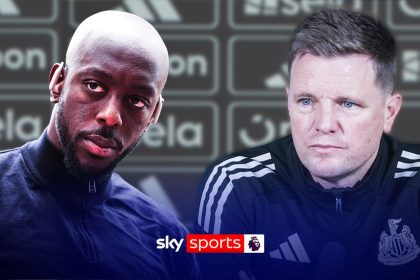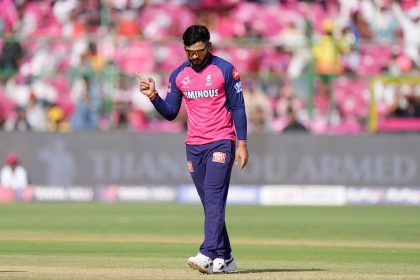The Dallas Cowboys response to dropping out of the playoffs at 7-10 and third in the NFC East a year ago, after making the postseason as a 12-game winner the previous three seasons, has been a lot of getting back to basics. For a team that was so fundamentally broken in the final year for head coach Mike McCarthy, one that left the team so unrecognizable from his past successes that many fans have a hard time remembering all McCarthy actually did accomplish on the football side of things over his tenure, this renewed focus on fundamentals has been praised at some turns, but criticized feverishly at others – mainly the hiring of offensive coordinator Brian Schottenheimer to replace McCarthy as head coach.
Schottenheimer’s first draft has cooled those waters considerably, for now. The Cowboys front office has never wavered in wanting to use the draft as their main source of talent acquisition. Although this wasn’t expected to change under Schottenheimer at all, the team had to do more than sit on their hands and let players get away in free agency without signing new players themselves, and did so while also being active on the trade market. In their estimation, this was enough to go into the draft with a clearer focus on targeting the best players available, regardless of positional need, through all seven rounds. The Cowboys still showed preferences for the things their new head coach is seeking, like improved line of scrimmage play by spending the 12th overall pick on guard Tyler Booker and 44rd pick in the second round on defensive end Donovan Ezeiruaku. They continued to target high character prospects from blue chip programs like Texas, Florida, and Oregon on day three with running back Jaydon Blue, linebacker Shemar James, and offensive lineman Ajani Cornelius.
This full commitment from picks 12 through 247 to create a deeper roster and strengthen positions with existing star power is what’s earned the Cowboys strong grades for their draft as of now, but the obvious position of need this strategy left unaddressed is guaranteed to remain a talking point from now all the way to Schottenheimer’s regular season debut in September, and likely beyond.
If you haven’t figured it out by now, here we are again, talking about the Cowboys not being good enough at the wide receiver position. The more things change, the more they really do stay the same, because a lack of dynamic skill at WR has been an off-and-on problem for the Cowboys through multiple head coaches, offensive coordinators, and even quarterbacks now. Even with it being a position they’ve shown a willingness to step outside their perceived comfort zone and address with in-season trades, like for Amari Cooper in 2018 and Jonathan Mingo last year, the Cowboys are regularly behind the best of the best in the NFL when it comes to making enough big plays on the outside to truly contend in the postseason.
The WR room has had some peaks, like the unfortunately brief period where CeeDee Lamb, Cooper, and Michael Gallup were all healthy and on the field together, but also some incredibly low valleys like Noah Brown, Cedrick Wilson, or more recently KaVontae Turpin being asked to play well beyond what their roles should be on offense. There are an endless number of reasons why one of the most common critiques of the Cowboys, specifically from inside the realm of opposing coaches and players they line up against, is that they are too easy to scout, prepare for, and play against in high leverage situations. A lack of firepower at wide receiver belongs near the top of this list though.
Bob Donnan-Imagn Images
However, adjacent to it is one thing the Cowboys are not only hoping to fix early on at the start of the Schottenheimer era, but perhaps the only thing that will sell the majority of the fanbase on Schottenheimer being a legitimate HC in the first place. Through all of the changes mentioned above in personnel and coaches, the Cowboys have had a major lack of creativity in their offensive play-calling and ability to scheme receivers open. They do not help quarterback Dak Prescott in the ways that other passers around the league, all of which currently make less than the Cowboys leader who became the highest paid at the position prior to week one a year ago, are lifted by play-calling that always seems to allow for easy completions and yards after the catch. The Cowboys making a basic 10 to 15 yard gain in the passing game last season, admittedly without Prescott on the field, felt so incredibly laborious if not borderline miraculous. Meanwhile, the bread and butter for other teams that reached the postseason was to rattle off these types of plays with ease by creating space for their skill players to run.
For Cowboys fans still questioning what exactly Schottenheimer brings to the table, or comparing him to Jason Garrett who was often asked the same over his tenure, the best way for the new HC in Dallas to answer it is now staring America’s Team in the face. Coming out of the draft without a single pick spent on a new receiver was a major surprise, and tolerance for the predictable Jerry and Stephen Jones sell jobs that Mingo, Ryan Flournoy or Jalen Brooks can be a consistent WR2 to Lamb is understandably low. The time is unequivocally now for Dallas to uplift the talent they do have at receiver with schemes that bring them up to the more modern approaches to offense in today’s NFL. Any realistic discussion about how the Cowboys can actually get the most out of young players with untapped potential like Jalen Tolbert, Brooks, Mingo, Flournoy, or even their full-time punt/kick returner Turpin has to start with how the brain trust of Schottenheimer as play-caller and Klayton Adams as OC will help these players create separation and access to routes with their scheme.
Tim Heitman-Imagn Images
Schottenheimer’s initial glimpses into his vision for the offense, one the Cowboys front office clearly felt he wasn’t largely responsible for the collapse of while working under McCarthy as play-caller, have been nothing more than just a small step in the right direction. With the team spending it’s first three picks on OL, DL, and a CB still rehabbing from ACL surgery, there is a noticeable lack of new faces or points of intrigue to really hone in on once Dallas begins offseason workouts. The time for more pressing questions about why WR wasn’t prioritized harder in the draft, and what the Cowboys are going to do about it, is approaching like an oncoming train, and will be the first real litmus test of how ready this team is to compete again until proven otherwise.
The Cowboys wanting to install multiple options out of similar-looking formations to the defense and run the ball behind an offensive line built to excel out in space are all great goals to have, but so too is getting a receiver not named Lamb – who was banged up all of last season and missed the final two games – open on a regular basis. The average water cooler fan getting ready for a fantasy draft in a few months would have a hard time naming another Cowboys player that has this skill. There may even be a longshot case for fifth-round pick Jaydon Blue to already be one of the best separators in route running behind Lamb for the Cowboys, and he is a running back.
The Cowboys have both their play caller in Schottenheimer and quarterback in Prescott under contract for the next four seasons. The sense of urgency to win in this window should be heightened with Prescott coming off yet another season ending injury to start 2025. The fact that Prescott will get this “redo” of sorts to begin his new contract that carries a heavy burden of expectations with a HC also coming into the job already under fire may be a good thing. The general direction of the franchise at the time they decided to hire Schottenheimer was difficult to understand, despite being so financially committed to Prescott and needing a quick fix around him. The fear around the hire was that Schottenheimer, being an internal candidate elevated to HC, wouldn’t have enough of an influence to steer the team out of the dark waters of distractions and lack of player acquisition outside the draft to get things going in a positive direction again. To some, it was seen as a near admittance from the Jones’ that winning football games is not of top priority in Dallas. The way they’ve collectively rolled up their sleeves to show a coherent plan for how the Cowboys under Schottenheimer want to look has been an impressive response to this criticism, but offensive play-calling and wide receiver talent are still holding the entire ship back until proven otherwise.
Every season, it has become something a yearly tradition for national media members, mainly former players that break down tape, to turn on the Cowboys offense and revel at the sheer amount of curl, drag, or stop routes they run throughout a game. The team becoming painfully predictable in this way was a problem under Garrett, a problem when Kellen Moore was here calling plays, and a problem under McCarthy. Schottenheimer was only here for part of the McCarthy tenure of course, but the familiarity in the process that led to his hiring makes it feel like he fits in even more to this past offensive lineage in a sense. For a lifelong assistant that’s been in the league on-and-off since 1997, getting his first head coaching opportunity for the ninth NFL team he’s been with, Schottenheimer of all coaches should be eager to break this mold and immediately start writing his own legacy as Cowboys head coach in 2025. This is a coach out of the shadows of pro football obscurity for the first time at 51 years old, handed the chance to move a franchise that’s been stuck in the mud for nearly his entire career forward in the one area they’ve needed the most help as of late. The Cowboys don’t even need to surpass either conference finalist from within their own division, the Commanders or reigning champion Eagles, to make progress that would be seen as a great positive in this area with Schottenheimer calling the offense.
As opposed to a jumbled up mess of outside noise about what Schottenheimer is or isn’t capable of as a first time HC, the time between now and week one of the upcoming season will now be spent mainly laser-focused on one position of obvious need for the Cowboys, and what their offensive-minded coach can do about it. Having this black and white area to judge Schottenheimer by could be a good thing when it comes to other things the Cowboys are preparing more in the background, like the sorting out of a RB depth chart currently crowded with five names, the development of a young offensive line looking to reclaim their spot as one of the league’s best, or the progress Matt Eberflus can make on defense in his return to Dallas after having a seemingly heavy influence on their draft choices.
The Cowboys have used every point of the offseason so far to gradually show how serious they are about being a better running team again, but the viability of the passing offense to at least keep them in the playoff picture remains a serious question following the draft.
